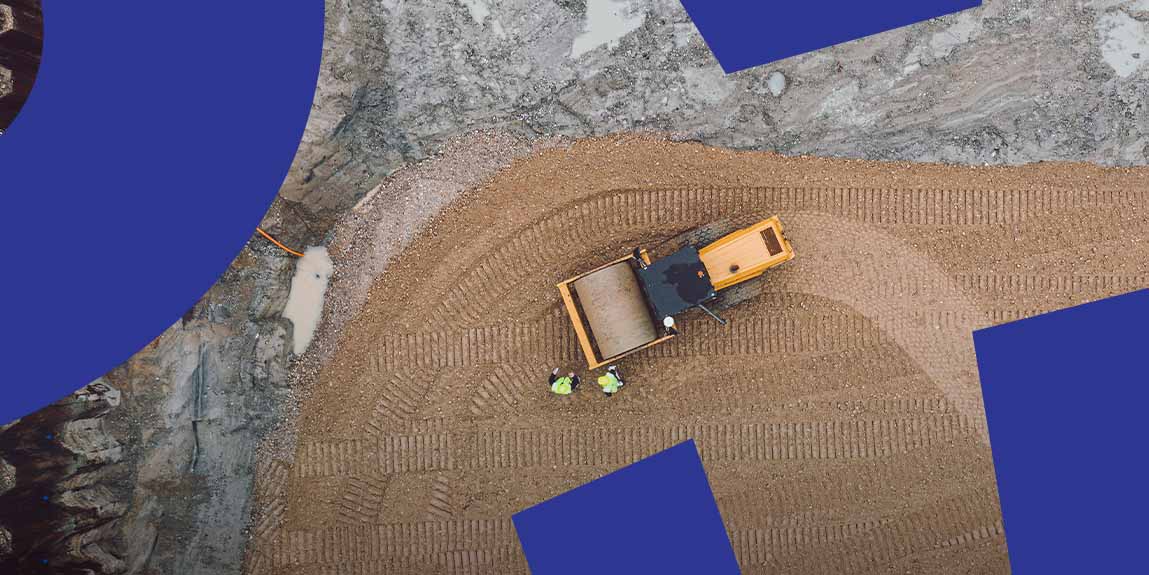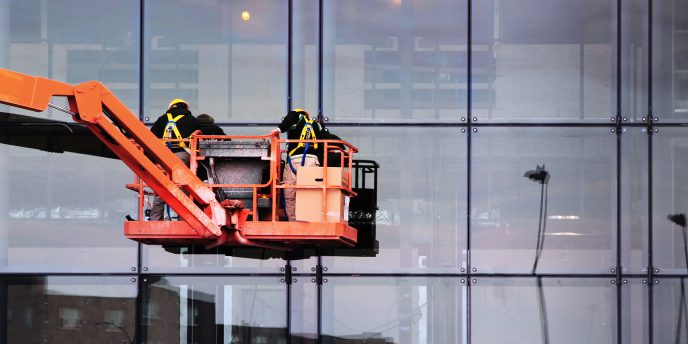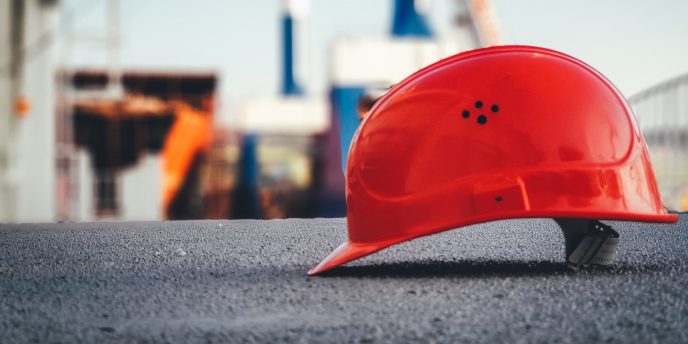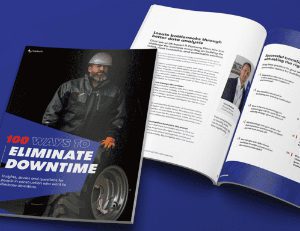

Construction is obsessed with safety. Yes, that’s an obvious thing to say and a cynic might argue that part of that forensic analysis is about brand protection or the fear of liabilities. But, while it would be foolish to suggest neither are valid concerns, they really are, in the scheme of things, secondary.
Sometimes the answer stares you straight in the face. And if there is anything that can be done to reduce the risk of incidents or even fatalities on the job site, then that massively outweighs all other considerations. That’s because incidents on construction sites are an unfortunate reality even today despite our ever stricter regulatory environments and desire to minimize risk.
According to the latest International Powered Access Federation safety report, there were 831 incidents among reporting members in 2022 and 102 fatalities. While that represents a fall of 19% on 2021 it is of course some way from what the industry wants.
IPAF’s work on the safety front is to be lauded. Its sterling work on controlling access via its ePal app has been key in establishing a base standard as to who can and can not access a machine and as of November 2022, there had been more than 250,000 downloads globally. It is already hardly a matter of dispute that, for example, a worker on a mobile elevated working platform is probably less at risk than someone on a piece of scaffolding.
“To put it another way, ‘good enough’ really is not good enough here.”
IPAF doesn’t, and does not claim, to cover the whole of the global powered access sector, but the growth in IPAF membership and ePal downloads indicates that there is an all consuming and unequivocal desire among stakeholders to make construction as safe as possible. To put it another way, ‘good enough’ really is not good enough here. And always at the forefront of that discussion is an agenda that puts zero fatalities, zero incidents and zero-risk firmly on the table. Indeed, zero incidents are the Shangri-la, the holy grail and the World Series all rolled into one and, given where the industry is heading with the next step in access management, we’re about to get closer.

Let’s be clear here. Access management is the process of allowing or blocking site entry and machine access with the absolute desire to minimize risk. And after years of hard work, a great deal of trial and error, and to some extent a change in how the industry thinks about access management, it is on the verge of something that will undoubtedly take it to the next level.
But let’s recap quickly. The biggest problem the industry has had to solve following the first wave of access management dating back to around 2016 related, not to cost, but administration and implementation. In fact, cost is not and never has been an issue. At all times, the decision makers have, without exception, made it absolutely plain that they will do what it takes to put in place a rigorous system.
But making the first generation of digital machine access management work effectively has at times been a trying exercise. The challenge came in optimizing the application of the technology and the necessary change management that required. So whether someone had a rental fleet of 100,000, 50,000, or 5,000 machines, the problem came when customers tried to administer and distribute access.
Typically, you might have had the contractor and potentially three or four layers of subcontractors under the general contractor who would need to actually utilize or manage any given machine. On bigger projects, that could mean access keys or passcodes required for hundreds or even thousands of operators on a jobsite across a complex organization. It then became a question as to how their workflow got back to the rental company who owns the machine and in theory owns the access rights.
“But making the first generation of digital machine access management work effectively has at times been a trying exercise.”
It quickly became apparent that this was a serious workflow complication and a complex puzzle to solve. Effectively a quality assurance issue, rentals were faced with the problem of maintaining that standard all the way through the chain, requiring a degree of change management that was hard to implement. In the event, a reversion to sharing keys or swipe cards has more often than not been the unsatisfactory, quick-fix answer.
That’s not to say version 1 did not work. It worked well on many levels. And many companies implemented it with varying degrees of success. But it was limited for the reasons we state above and required the innovators of the industry to go back to the drawing board for a reset on where it could be improved.
And with the increasing sophistication of the technology in our hands, that’s changed. Suddenly, it opens up a horizon that is vastly wider and all encompassing. Imagine if you will forcing your way through a bottle neck and after a prolonged struggle, finally squeezing through. That’s pretty much where we’ve been and where the next stage of the journey for access management is taking us.
In essence, this is a connectivity breakthrough. Through the integration of machinery into the access management paradigm, the unwieldiness that plagued the first generation has been greatly simplified. The barrier that essentially provided the biggest block to a systematic system of digitally controlling access has effectively been removed.
How does this translate going forward? Rental companies and contractors can, with their telematics partners, be confident that they have in place the necessary safeguards to greatly reduce risk and also have far more opportunity to win new business where strict safety requirements are present in the contract.
It can automatically ensure that only those with the requisite qualifications are allowed to operate complex machines like MEWPs and excavators. It means that it is no longer just about site access. It’s full-on machine access management too and offers up the exciting prospect of potentially every piece of equipment being part of that system.
That means access can be monitored remotely and if necessary, taken away at the press of a button. We mentioned earlier about liabilities and, while I stress again this is not the first thought that enters a fleet owner’s head in the safety debate, being able to visibly demonstrate you’ve taken every step possible to manage access automatically adds another layer of protection in the event of an incident.

This is an incredibly exciting development because it brings us a step closer to the standardization of safety on the construction site. As it stands, we have variable standards that, while frequently setting a high bar, are not ubiquitous. It could mean, for example, that when skilled operators change jobs or companies across different jurisdictions, they would no longer have to go through a new wave of training dictated by the requirements of that company or region.
“This is an incredibly exciting development because it brings us a step closer to the standardization of safety on the construction site.”
That’s still a little distance into the future but that possibility has now become very real. In the meantime, an already very strong focus on safety will only be strengthened as a top-down approach from OEM and rental to contractor and the individual operators fosters an ownership culture where the workforce takes direct responsibility for access and, by extension, risk minimalization. It might, in time, even enable a more inclusive workforce as the construction site becomes demonstrably safer.
If this sounds utopian, I’m willing to hang my hat on getting a lot closer to that kind of environment. We’ve seen how ownership is key to fostering positive reinforcement cultures both on sustainability and in the automotive industry and we can do similar here with strong messaging, the necessary technological upgrades and the appropriate regulatory nudging in the right direction.
We’ve been clear already that the industry wants this. And it is very likely that for a marginal extra investment, it will have a system that is way more more effective than the current level of access management. I’m convinced that once the case for the next generation is established and proved, it will be adopted by the vast majority of the industry which then will have a knock-on effect through the rest of construction.
There will no doubt be further collaboration with organizations like IPAF as part of an effort to drive safety improvements through access. But if we get it right, I really see no reason why every piece of equipment on every site, say, in North America comes standardized and fully integrated into the system. If we get that, the safety benefits, the business value and the battle against downtime really will take a quantum leap. It’s something to strive for.
Have you downloaded our special publication on access management? This in-depth analysis of the history of access and its development dives deep into the subject with expert opinion validated by key data and evidence to give a picture of where we are today.

Never miss an insight. We’ll email you when new articles are published on this topic.
